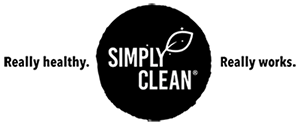Backhousia citriodora. Can’t get your tongue around that? Then call it by its more common name – lemon myrtle, or as we like to call it – lovely lemon myrtle.
Most Australians know the basics about lemon myrtle – an Australian native found in rainforest areas of the country with fragrant leaves that have hints of lemon, lime and lemongrass. You may know about the health benefits. You probably know lemon myrtle is found in some cleaning products. You may also know it’s used in cooking (like the delicious Lemon Myrtle Cheesecake recipe at the end of this post).
But did you know that we are still discovering the many wonders of lemon myrtle? It seems there’s a lot more to this plant than first thought.
The history of lemon myrtle
Lemon myrtle has quite the history. For centuries, Australian Aboriginal people have used the leaves (which are prominent in bush foods) as a seasoning. They also used it as bush medicine (today the health benefits attributed to lemon myrtle are many and varied).
Its botanical name comes from the English botanist, James Backhouse (1794 to 1869) - backhousia, and; the fact that these richly scented lemon leaves are of the specific epithet, citriodora.
In the early 1900s, lemon myrtle was distilled in a factory located in the small town, Eumundi, on the Sunshine Coast of Queensland. In 1920, it was discovered that the distilled steam had antimicrobial qualities.
Lemon myrtle found worldwide fame when Jamie Oliver used it in one of his dishes. He descried it as ‘pukka’ (translated: really good).
Health benefits of lemon myrtle
Even 100 years ago, it was known that lemon myrtle has a high citral content (citral is a powerful antimicrobial and synthesises vitamin A). Today, specialists are still discovering the exceptional properties of lemon myrtle.
Lemon myrtle has significant antibacterial properties, as well as anti-fungal properties. Scientists at Charles Stuart University determined that lemon myrtle oil is actually a better anti-fungal and antibacterial agent than tea-tree oil* – in fact, its anti-microbial activity was shown to be 30% higher, a remarkable discovery given the fact that tea tree oil has been the ‘star’ antibacterial agent for decades!
Although not considered a ‘medicine’ by any means, there is quite a long list of benefits attributed to lemon myrtle (according to those who use it in this way). These are just a few:
- Indigestion and Irritable Gastrointestinal Disorders. Certain lemon myrtle properties help to stimulate the digestion process.
- Bronchitis. The use of lemon myrtle essential oil can decrease inflammation as well and fight the infection.
- Influenza. Taking steam with few drops of lemon myrtle essential oil can help alleviate symptoms of the flu.
- Boosts Immune System. Taking lemon myrtle orally strengthens your immune system. You can use it in the form of tea, powder or oil.
- Sinus Infection. Lemon myrtle has anti-inflammatory properties that help to reduce infection.
- Oral Health. Lemon myrtle can be useful in treating mouth ulcers, irritation, tooth problems, etc. That’s because lemon myrtle cleanses the mouth, thus protecting it from bacteria.
- Sleep. The herb has a relaxing effect that can calm the mind.
- Sore Throat. Lemon myrtle has antiseptic and anti-inflammatory properties.
- Athlete’s Foot. Lemon myrtle has an anti-fungal property.
- Insect Bites. Applying lemon myrtle can calm the affected area and reduce inflammation.
Food
Lemon myrtle is highly aromatic, with hints of lemongrass, lime and lemon. While aboriginals have been using it for years, chefs and home cooks are now discovering the ‘bush tucker’ benefits in flavouring dishes, especially beef, chicken, fish and rice dishes. It can also be used in sweet dishes (see our wonderful Lemon Myrtle Cheesecake recipe below!).
Lemon myrtle leaves also make a beautiful herbal tea, that is also an antioxidant.
Is there any end to the benefits of lovely lemon myrtle? Only time – and further research – will tell.
SimplyClean lemon myrtle products
By now, you should understand why lemon myrtle is our ‘star’ ingredient. We use it in a number of our products for its beautiful aroma, as well as its antibacterial and anti-fungal properties. We feature lemon myrtle in our laundry powders and liquids, hand soap, dishwashing liquid, floor cleaner, air freshener and spray & wipes.
We’ve also recently released Lemon Myrtle Essential Oil, which you can use for many of the apparent health benefits listed here.
As you can tell, we love lemon myrtle. And, best of all, that the same lemon myrtle we use in our products is grown in the hills surrounding our factory. How good is that?
-----
*The essential oil distilled from the leaf has strong anti-bacterial and anti-fungal properties. The Rideal-Walker test assesses the anti-microbial activity of a plant by examining the phenol co-efficient of a number of essential oil components such as citral, using bacteria salmonella typhii as a test organism. The test (in which the higher scores are best) awards Lemon Myrtle oil a co-efficient rating of 16, Tea tree a score of 11.
Lemon Myrtle Cheesecake
BASE
- 1 cup biscuits crushed
- 1 cup macadamias crushed
- 125 g butter melted
FILLING
- 125 g soft butter
- 250 g cream cheese softened
- 1 cup caster sugar
- 2 tsp vanilla essence
- 2 tsp gelatine powder
- 60 ml hot water
- 2 tbs ground lemon myrtle
Method
1.Base: Mix crushed nuts, biscuits and butter.
2.Press into base of dish and refrigerate while making filling.
3.Filling: Place softened butter, cream cheese, caster sugar, vanilla essence and ground lemon myrtle into a large bowl and cream with an electric mixer.
4.Dissolve gelatine in about 60 mL of hot water and when cool gradually add to the mixture.
5.Beat until light and fluffy.
6.Pour over the biscuit base and place in the fridge overnight to allow the lemon myrtle flavour to infuse the cheesecake.
With thanks to bestrecipes.com.au

